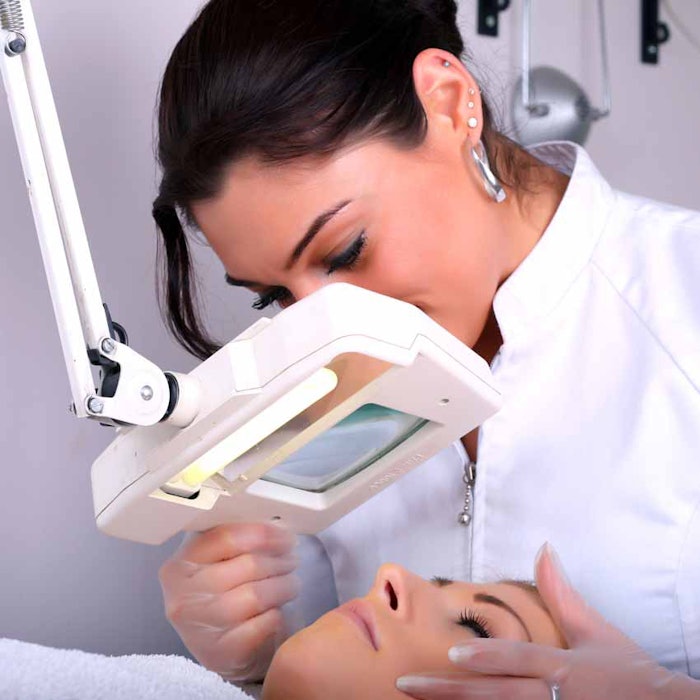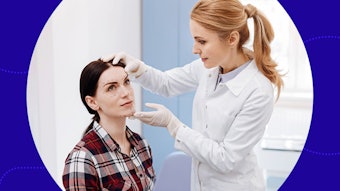
I consider myself blessed to have found my destiny early in life. As a toddler, I delved into my mum’s makeup, made oatmeal masks from morning porridge and took tweezers and scissors to every doll (and trusting human). At 13, I got my first job in the local village salon. My duties included laundry, sweeping, making tea, shampooing and massaging client’s hands while they snoozed under the dryer. Before long, I had convinced the local patrons to let me paint their nails, pluck their brows and even apply makeup.
That squeaky, awkward lamp is essential? Yes!
Fast forward 30 years, and while the “beehive community” aspect of our work remains, nothing else exists like it did. Today, skin care professionals need the most advanced technology at their fingertips, and they need to know peptides from parabens, all while Instagramming summer skin tips to their social. In this microcurrent, LED, hydrodermabrasion machines-in-the-marketplace madness, we forget about the indispensable tools of the trade. They may not be sexy, but to me, they are the workhorse essentials that lend success to every skin professional.
Magnifying Lamp or Headset
I can see you rolling your eyes. That squeaky, awkward lamp is essential? Yes! You’ve got to be able to see and touch every millimeter of your client’s skin, identify what you observe, investigate its cause and then converse with your client to establish solutions.
This is still a weak area for many skin therapists. Skin analysis is not about shining a light on the skin for you to see what you are doing, or worse, using the opportunity to intimidate and up-sell your client. It is a vehicle that helps demonstrate your knowledge while gaining clients’ trust.
When skin therapists ask my advice on how to increase retail sales, I ask if they are mapping their clients’ skin. Often times they are not performing a thorough consultation, charting details or questioning clients about habits, product use and lifestyle. This is the difference between authentic prescriptive retailing and selling, and it starts with feeling confident about the physiology of the skin and all of the glorious manifestations we can find on it.
A Professional Uniform
Look the part! Whether you have an “official” uniform or not (and I personally recommend one), appearance is a major part of your perceived professional attitude. It has been shown that workers who wear uniforms project a more professional image that encourages trust and confidence. You have three seconds to make an impression–will it be good or bad?
Appearance can alter physiological reactions, judgments and interpretations. Just think of all the subtle judgments you quickly make about someone based on his or her appearance. These first impressions are important, so dress accordingly. That means proper hygiene and presenting a look that is clinical, not trendy. Pull your hair back, keep your nails short, apply your makeup and smile.
Products that Go the Distance
All the professional tools in the world cannot provide optimal results if the client doesn’t follow your recommendations at home. That monthly acne-clearing skin service won’t help your client’s breakouts if she’s using her roommate’s recommended face wash.
The products you use in the treatment room and prescribe for at-home use are crucial to business survival. As we can only physically offer so many services per day, retailing is core to profitability. Select your product partner carefully, understand the products and ingredients inside and out, and believe in their ability to treat and solve every skin challenge. Your clients will see tangible results and thank you with increased loyalty, more frequent visits and referrals.











